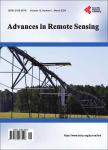Hyperspectral Reflectance Characteristics of Cyanobacteria
Hyperspectral Reflectance Characteristics of Cyanobacteria作者机构:US Geological Survey Reston VA USA
出 版 物:《Advances in Remote Sensing》 (遥感技术进展(英文))
年 卷 期:2021年第10卷第3期
页 面:66-77页
学科分类:07[理学] 0701[理学-数学] 070101[理学-基础数学]
主 题:Cyanobacterial Harmful Algal Blooms (CyanoHABs) Cyanobacteria Hyperspectral Remote Sensing Hyperspectral Microscopy Imaging Spectroscopy
摘 要:Potentially harmful cyanobacterial blooms are an emerging environmental concern in freshwater bodies worldwide. Cyanobacterial blooms are generally caused by high nutrient inputs and warm, still waters and have been appearing with increasing frequency in water bodies used for drinking water supply and recreation, a problem which will likely worsen with a warming climate. Cyanobacterial blooms are composed of genera with known biological pigments and can be distinguished and analyzed via hyperspectral image collection technology such as remote sensing by satellites, airplanes, and drones. Here, we utilize hyperspectral microscopy and imaging spectroscopy to characterize and differentiate several important bloom-forming cyanobacteria genera obtained in the field during active research programs conducted by US Geological Survey and from commercial sources. Many of the cyanobacteria genera showed differences in their spectra that may be used to identify and predict their occurrence, including peaks and valleys in spectral reflectance. Because certain cyanobacteria, such as Cylindrospermum or Dolichospermum, are more prone to produce cyanotoxins than others, the ability to differentiate these species may help target high priority waterbodies for sampling. These spectra may also be used to prioritize restoration and research efforts to control cyanobacterial harmful algal blooms (CyanoHABs) and improve water quality for aquatic life and



